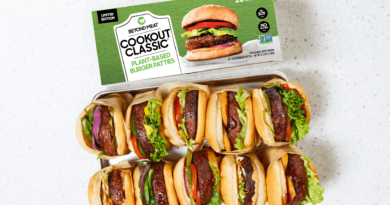Champagne sales are booming. But its taste could soon change forever — thanks to climate change
More than 325 million bottles of champagne were shipped from Champagne in 2022, according to Comité Champagne.
Champagne has been a hallmark of celebrations and luxury living for centuries. But Europe’s soaring temperatures and increasingly volatile weather are sparking fears that France’s Champagne region could become unsuitable for its production.
More than 325 million bottles of champagne were shipped from Champagne in 2022, surpassing 6 billion euros ($6.6 billion) in sales for the first time, according to the champagne trade association Comité Champagne. The biggest markets are the United States, Britain and Japan.
The committee suggested a “prudent outlook” for 2023, though it said growers and houses in Champagne “remain confident in the basic health of their business.”
The health of the climate, however, throws the beverage’s future into doubt — champagne houses will have to adapt to survive and the flavor of champagne could change along the way.
Sunburned grapes, damaged flavors
The Champagne region’s exposure to the physical risk caused by drought is set to almost triple by the 2050s, according to the S&P Global Sustainable1 report, posing serious problems for vineyards.
The report scores regions on a scale of 1-100, where a score of 100 represents maximum risk exposure. It said the risk of drought in Champagne will rise from the current level of 16 to 43 by the 2050s, then double to 88 by the 2090s — if no changes are made to current climate policies.
Drought isn’t the only factor that can hamper production. The weather is increasingly erratic, with fires, floods, and frosts becoming more frequent in recent years.
More than ever, we are working to adapt.
Sandrine Sommer
Chief Sustainability Officer at Moët Hennessy
Even if grapes are still able to grow in a changing climate, the conditions can alter the fruit’s development and cause damage.
“[If the grapes] get exposed to too extreme UV rays, then they will get the equivalent of our sunburn and that will basically … damage the flavor,” Matt Hodgson, founder of English wine retailer Grape Britannia, told CNBC.
Champagne vineyards are pictured near the village of Ville-Dommange a few kilometers from Reims, in northeastern France.
Francois Nascimbeni | Afp | Getty Images
The additional heat can also change the grapes’ acidity, which gives champagne its freshness and “intangible zip and zing,” Hodgson said.
International brands are aware of the huge impact climate change can have on their businesses.
“We recognize the effects of climate change on all Moët Hennessy’s terroirs, and to different degrees,” Sandrine Sommer, chief sustainability officer at LVMH’s wine and spirits division, Moët Hennessy, told CNBC via email.
“More than ever, we are working to adapt,” Sommer added.
The Champagne method
The best-known rule of champagne is that it must be produced in the Champagne region of France, but the long list of appellation rules that must be followed includes specific vineyard practices; sourcing grapes from certain locations; particular grape-pressing methods; and the use of only select varieties of grape.
The use of pesticides and additional acidifying are banned, and all stages of production must take place in Champagne, right up until the labeling of the bottle. But champagne houses are tweaking their processes to continue production within the strict confines of the rules.
Winegrowers load a traditional wine press with Chardonnay grapes during the harvest, in Montgueux, central France.
“20 years ago the harvest used to take place at the end of September, beginning of October,” Champagne Taittinger spokesperson Claire Sarazin told CNBC. Now, the champagne house harvests grapes at the end of August and the beginning of September.
In terms of flavor, what you’re noticing a lot is much riper characteristics.
Tom Hewson
Champagne critic
The changing temperatures also mean that champagne is becoming naturally sweeter.
“We have so much fun and so much sugar basically in the juice that you don’t need to add sugar anymore,” Sarazin said. “It’s not an issue so far, but it’s something we have to take care of.”
‘Definite shift’ in taste
According to critics, some champagnes already taste very different from the champagne that people had years ago.
“In terms of flavor, what you’re noticing a lot is much riper characteristics,” champagne critic Tom Hewson told CNBC, adding that it brings bubbly closer to other white wines and makes it “a more transparent wine.”
Wine judge and critic Susy Atkins has also noticed that the taste of champagne has changed in recent decades.
“I have noticed a subtle change in my 30-odd years and … other people who’ve got more like 50 years of wine tasting experience have pointed to a definite shift in style towards the more rich,” Atkins said.
Future of champagne
Champagne houses are taking different approaches to conserving their futures in the assiduity, including eyeing locales with analogous climates to Champagne.
Taittinger came the first champagne house to invest in English sparkling wine back in 2015, nearly followed by Pommery in 2016. But ways are being taken to maintain the distinction between English and French-made products. A bartender pours a bottle of Taittinger Champagne.
Taittinger’s English sparkling wine, for illustration, is simply for the British request to avoid” cannibalization” of its original product. When asked whether it’s possible that champagne will no longer be produced in the Champagne region, Taittinger said the brand has” a more positive” outlook, and that Comité Champagne is exploring avenues similar to developing new grapes. So far, still, the association has yet to find a grape that meets the high norms necessary for champagne- timber.
” It would be self-murder to not consider druthers, wouldn’t it?” Matt Hodson Author of English wine retailer Grape Britannia Moët Hennessy, for its part, has no intention of opening stations in England, according to CEO Philippe Schaus’ commentary to The Telegraph.
The long list of rules needed to make champagne could also be acclimated as the region looks to stay in business. But does that mean the result is still champagne as we know it? ” It might be commodity new and commodity nice, but if you love champagne as champagne is now, also that will not be what Champagne is producing if it changes the rules,” Grape Britannia’s Hodgson said.
” If it’s a choice between not being and. expanding the area or changing the area by which you can call the name, also who knows what( champagne directors) might choose,” Hodgson said.” It would be self-murder to not consider druthers
, wouldn’t it?”



